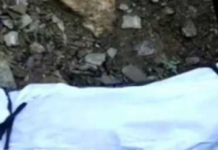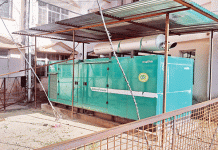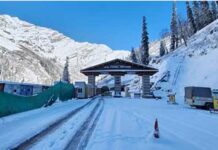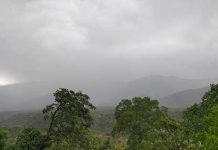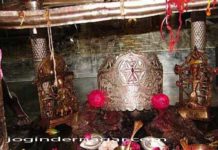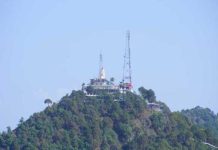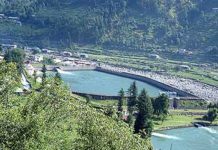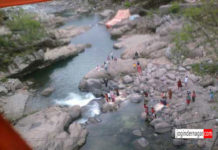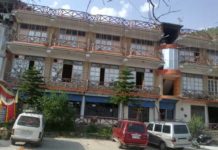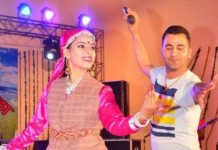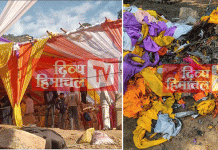History
Chamba has an ancient history, which is inseparable from that of the surrounding district of Chamba. The earliest rulers were Kolian tribes. In the 2nd century BC the Khasas and Audumbaras were in power in the region. In the 4th century AD during the Gupta period, the Thakurs and Ranas ruled. From the 7th century, the Gurjara Pratiharas or the Rajput dynasty came into power.Bharmour, the ancient capital of the district.
The recorded history of the Rajput rulers is traced to an eminent individual named Maru who is said to have moved to northwest India from Kalpagrama, around 500 AD. He founded his capital in the Budhal river valley at a place called Brahmaputra, which later became known as Bharmour or Bhramaur, which is situated 75 kilometres (47 mi) to the east of the present day Chamba town. For three hundred years, kings of Rajput Dynasty ruled from their capital in Bharmour.
However, in 920, Raja Sahil Varman (or Raja Sahila Verma), King of Bharmour, shifted his capital from Bharmour to a more centrally located plateau in the lower Ravi valley, and named the city Champavati, after his daughter. There is some variation in the story to how exactly this transition came about in the historical records of Chamba. One version tells how Varman, who, after being childless for a significant period, was blessed with ten sons and a daughter, named “Champavati”.
It was Champavati who urged her father to build a new capital town in the valley.However, obstacles stood in the way to relocating his capital, given that the king had previously granted the land in the modern Chamba vicinity to the Kanwan Brahmins. A solution was found in the form of offering a gift of eight copper coins called chaklis on the occasion of every marriage that took place in the Brahmin family, if they would agree to surrender their land to pave the way for the new capital. With the land thus obtained, the new capital was built and named as Champa after Chamapavati, the King’s daughter, which, over the years, was simply shortened to “Chamba’.
General Information
Population: 518,844
Area: 6,528 sq.km.
Literacy: 73.19
Tehsils: Chamba, Churah, pangi, Bharmaur, Bhatiath, Salooni and Dhalousie.
Sub-Tehsils: Holi, Sihuta, Bhalai.
Sub-Divisions: Chamba, Churah, Pangi, Bharmaur, Dhalousie and Chavadi.
Panchayts: 283
Map

Demographics
As of 2001 India census,Chamba had a population of 20,312. Males constituted 52% of the population and females 48%. Chamba has an average literacy rate of 81%, higher than the national average of 59.5%; with a male literacy of 85% and female literacy of 77%. The main languages are Hindi, the local language of Pahari, and Himachali is also spoken by some inhabitants.
Away from the urban centre, the tribal people of Chamba are divided into two major groups; the Gujjars and the Gaddis. The Gujjars, mainly nomads, came to Chamba across the state border from Kashmir along the trade routes. They belong to nomadic herdsmen of the Islamic community, and travel to lowland Punjab in the autumn with their livestock to avoid the harsh winter of the Chamba hills. Their features are middle-eastern and have a distinct language and culture aloof from the main town.
The Gaddis comprise several ethnic groups; namely the Brahmans, Rajputs, Thakkurs, Rathis and the Khatris, who form the majority. They are agricultural peoples, and the name “Gaddi” means “shepherd”.They mainly inhabit an area of the Chamba district in the Dhaula Dhar mountains, known as Brahmaur Wazarat or “Gadaran”, located between Chamba and Kangra. “Gadar” means sheep, so their land is informally referred to as “Gadaran”, literally meaning “sheep country”.They are believed to have come to Chamba in the 10th century, although an influx of Gaddi people migrated to Chamba from Lahore in the 18th century, during the Mughal Empire. They are said to practice animism combined with the worship of Lord Siva.
Climate
The temperatures in summer vary between 38 °C (100 °F) and 15 °C (59 °F) and in winter: 15 °C (59 °F) and 0 °C (32 °F). The maximum temperature recorded in summer is 39 °C (102 °F) and the minimum temperature in winter is −1 °C (30 °F). Climatically March to June is said to be the best period to visit Chamba, which is a well known hill station.The average annual rainfall in the town is 785.84 millimetres (30.939 in).
How To Reach
By Air
The nearest airport from Chamba is that of Kangra, located at the distance of 180 kilometer, and offers facility for reaching the place by air. Flights are easily available from all the major cities, like Delhi and Chandigarh.
By Road
The nearest bus station from Chamba is located at Chowgan. Bus service is easily available for reaching the place, from different destinations like Delhi, by road. Generally, the journey from Chamba to Khajjiar takes 1½ hours, to Bharmaur takes 3½ hours, to takes Dalhousie 3 hours, to Pathankot takes 6 hours and to Dharamshala takes 10 hours.
By Rail
The nearest railhead at Pathankot is 120 kms away. From here you can get taxis and buses up to Chamba.







